| |
The Social History of Western Sexuality
| |
Ancient Greece
and Rome 
Sappho (c. 613-570 B.C.)
| Ancient Greece and Rome:Of particular interest to theorists of gender and sexuality is the apparently greater acceptance of same-sex relations in ancient culture: between men, between men and boys, and between women. For feminist theorists, the figure of Sappho (from the isle of Lesbos) has been particularly influential, given her continuing influence on the notion and expression of lesbian desire through the ages. Sappho, born sometime between 630 and 612 BC, was a lyric poet (i.e. in the classic sense: she wrote her poetry to be accompanied by a lyre). She is one of the few female voices in the literature of ancient Greece and thus served as a model for future female writers. Her sensuous poetry also often took as its subject the love between women.This is not to suggest that the Greeks could not be exceptionally misogynistic, as the infamous passages against women in Hesiod's Theogony and Homer's Odyssey attest.note Another influential critic is Thomas Laqueur, who, in Making Sex, explores how sexuality from the ancients through the Renaissance was structured quite differently than it was in the nineteenth century or is today: specifically, he illustrates how science prior to the mid eighteenth century tended to perceive men and women as versions of one sex, so to speak: women were seen, that is, as lesser men, with the clitoris and the uterus but reduced or inverted versions of the penis and scrotum. Such a one-sex model, as Laqueur terms it, meant that the differences between men and women were not clear (or even so important) in these early medical texts: both men and women were seen as parts (if unequal parts) of a larger cosmological order. Given such a historical record, Laqueur concludes that sexuality itself (rather than just gender) is something that is historically determined. As he puts it, This book, then, is about the making not of gender, but of sex. I have no interest in denying the reality of sex or of sexual dimorphism as an evolutionary process. But I want to show on the basis of historical evidence that almost everything one wants to say about sex—however sex is understood—already has in it a claim about gender. Sex, in both the one-sex and the two-sex worlds, is situational; it is explicable only within the context of battles over gender and power. (11)Laqueur thus places himself in the camp of a group of critics following in the wake of Foucault and poststructuralism who contest even the traditional feminist distinction between nature (one's bodily sex) and nurture (one's acquired gender). |
Renaissance
(1550-1660)  | Renaissance:In 1533, the English parliament passed the first civil injunction against sodomy, which was basically defined as any form of non-procreative sexual activity (buggery, bestiality, etc). The sexes of the partners were not defined. Sodomy remained a capital offence in England until 1861; the last execution for sodomy took place in 1836.On the issue of sexual difference, Thomas Laqueur has illustrated in Making Sense that the differences between men and women were not as important to Renaissance scientists as they would be to the scientists of the eighteenth or nineteenth centuries. Indeed, according to the scientists of the sixteenth century, anatomy itself "displayed, at many levels and with unprecedented vigor, the 'fact' that the vagina really is a penis, and the uterus a scrotum" (79). Laqueur insists throughout his book that the difference in perception when it came to anatomy was not because of the stupidity of the observers but because of a different way of conceiving sexuality, just as our current perceptions about sex are being determined as much by political and epistemological structures as by "reality." As Laqueur writes, The absence of a precise anatomical nomenclature for the female genitals, and for the reproductive system generally, is the linguistic equivalent of the propensity to see the female body as a version of the male. Both testify not to the blindness, inattention, or muddleheadedness of Renaissance anatomists, but to the absence of an imperative to create incommensurable categories of biological male and female through images or words. Language constrained the seeing of opposites and sustained the male body as the canonical human form. And, conversely, the fact that one saw only one sex made even words for female parts ultimately refer to male organs. (96)Laqueur also suggests that the one-sex model persists in various strange ways well into the nineteenth century, citing anti-masturbation tracts as an example. An example in this Guide to Theory of the persistence of the one-sex model is Freud's theories about psychosexual development, which are explained in the Modules under Psychoanalysis. |
18th Century
(1660-1789) 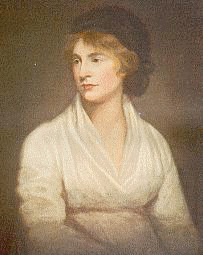 Mary Wollstonecraft (1759-1797) | Restoration/ Enlightenment:By most scholarly accounts, the eighteenth century was a transitional period in understandings of gender and sexuality. It was during this period that the groundwork was laid for the "naturalization" of gender categories, which became especially important in the nineteenth century and which provided for the belief that gendered behavior was a matter of biology—that, in short, biology was destiny. Eighteenth-century medical science paved the way for a strictly binary system of gender by "discovering" the incommensurable differences between male and female bodies. As Laqueur puts it, "[s]ometime in the eighteenth century, sex as we know it was invented" (149). He continues, writing,All the complex ways in which resemblances among bodies, and between bodies and the cosmos, [formerly] confirmed a hierarchical world order were reduced to a single plane: nature. In the world of reductionist explanation, what mattered was the flat, horizontal, immovable foundation of physical fact: sex. (151)Under this new system of sexual dimorphism, women and men were taken to be one another's opposites in most things. Whereas women were increasingly taken to be passive and passionless, for example, men were taken to be aggressive and sexually charged. Many of the truisms about gender behavior that contemporary sexuality studies works to dismantle (e.g. "boys will be boys") date from this period. The assumption of binary gender did not happen overnight, however. Some critics argue that eighteenth-century culture's emphasis on public display and ceremony meant that people accepted gender categories as performative rather than inherent or "natural," thus opening up spaces for the contestation of these categories. As Terry Castle has shown in Masquerade and Civilization, for example, the enormously popular masquerades of the eighteenth century (huge costume parties in which revelers often dressed in transvestite disguise) demonstrated the fluidity and artificiality of gender categories. Of particular importance in this period is the rise of Enlightenment values of equality, fraternity, and liberty, which many female thinkers argued needed to be applied to all humanity, including women. Mary Wollstonecraft's A Vindication of the Rights of Woman is an influential example of how Enlightenment values began to influence the call for women's own inalienable rights. Indeed, the French Revolution, which was greatly influenced by Enlightenment philosophers, included numerous calls for the liberation of women. Unfortunately in England the eventual war against France led many to dismiss early feminist thinkers like Wollstonecraft as overly radical because of their association with the dangerous French. Women's liberation was thus from an early age tied to other issues such as class, politics, imperialism, and also race (for Evangelical women and radical feminists were particularly outspoken and influential in the fight to abolish slavery in commonwealth Britain). Of particular interest on the sexuality front were the ever-increasing caveats in the period about masturbation, which, according to Samuel-Auguste-David Tissot (one of the most influential doctors of the period) could lead to everything from gonorrhea to blindness to painful and shameful death. The new fears about masturbation (which hardly existed before the eighteenth century) set the stage for the nineteenth-century fascination with the disciplining of the private body and its desires. Much of the rhetoric directed at the Onanist (the common term in the period for a masturbator) would later be re-directed to the homosexual after the medicalization of homosexuality at the end of the nineteenth century. |
Nineteenth Century:The nineteenth century was dominated by the idea of "natural" gender distinctions and by a conception of normative sexuality that was centered largely on the middle-class family. There were, of course, many expressions and forms of non-normative (i.e. non-procreative, non-heterosexual) sexuality, but these fell under increasing scrutiny and discipline from a variety of institutions, including medicine and the law.The middle-class culture that came about in Britain and America as a result of urbanization, industrialization, and strong economic growth (which is to say, that could not have happened without the enlightenment) imagined itself as existing in two complementary but separate spheres: the public and the private. These spheres were roughly commensurate with the binary gender distinctions discussed above. The public sphere belonged to men: it was the sphere of business and money-making, of politics and empire building, of industry and struggle. The private sphere, on the other hand, was considered to be a feminine preserve: it was the space of the home and the hearth, of sympathy and nurture, of simple piety and childrearing. Men obviously crossed into the private sphere when they left their business for their homes—where they were to be "softened" by the gentle ministrations of their dear home angels—but women had limited access to the public sphere. This double system underwrote a capitalist economic system—by creating the home as a sphere of consumption rather than production and by creating the middle-class wife as a leisured consumer—and it underwrote the middle-class ideal of a private domestic sphere that was untouched by the ravages of commerce. (You will immediately see the paradox in this.) The middle class's claim to cultural authority hinged on their claim to moral superiority: the middle-classes were represented as being more human and better feeling (and acting) than their aristocratic counterparts. As Nancy Armstrong has argued in Desire and Domestic Fiction, much of the transfer of cultural power from the aristocratic world to the middle-class world happened through cultural imagery—it was basically a matter of good public relations. Armstrong argues that we cannot undervalue the work of the novel in providing representations of middle-class life, behavior, and superior feeling. The domestic novel, in particular, portrayed the middle-class woman as the ultimate symbol of middle-class domestic virtue. A primary figure of the period, one that was supported by the conservative female domestic novelists, is the "Angel in the House," the perfect self-sacrificing and self-disciplining domestic housewife, who is implicitly or explicitly contrasted to the demonic whore-figure. The woman in Hunt's painting, "The Awakening Conscience" (on the left), is poised between these two possibilities for female subjectivity. Such a situation did not prevent many female novelists from questioning aspects of domestic ideology, as explored, for example, by the groundbreaking study, Madwoman in the Attic by Sandra Gilbert and Susan Gubar. The domestic ideal came under increasing fire towards the latter half of the nineteenth century, fueled by a public debate about women's roles that the Victorian's called "The Woman Question" and by a series of high-profile scandals and court cases. During the 1860's, when sodomy was removed from the list of capital crimes, laws governing sexuality were being rethought in England due to a number of factors, which include the following: the 1857 Marital Clauses Act, which created a secular Divorce Court and made it possible for women to divorce their husbands, thereby intensifying the commensurate desire to regulate female sexuality; the growing visibility and economic power of the working classes, aligned throughout the nineteenth century with unregulated sexual drives; the strange fact of "surplus" women, which forced women into the workplace and again intensified scrutiny on women's roles and sexuality; the increasing panic over prostitution, which might have been the "oldest profession" but gained a new power over the cultural imagination due to an increase in population and urban poverty (among other things). In response to this panic over sexuality and its regulation, parliament passed the "CD Acts"—the Contagious Diseases Acts—in 1864, 1866, and 1869 (the same year that Cambridge University first opened a college for women and the year before the Married Woman's Property Act gave married women legal identity). The CD acts were—nominally—acts meant to shield the population from the vice of prostitution. In truth, they gave communities the right to regulate and police working-class women. Here is what the acts provided for: the arrest of women who looked like they could be prostitutes; the forced physical examination of women who were suspected of being prostitutes; the incarceration of women who carried a contagious venereal disease. As Ed Cohen has demonstrated in Talk on the Wilde Side, outrage over the CD Acts brought together a strange coalition of people: feminists, radical working-class men, and evangelicals. These groups protested the Acts' prejudicial treatment of women, prejudicial treatment of the working-class body, and effective endorsement of "safe" prostitution, respectively. Their coalition led a long campaign for the repeal of the CD Acts, a campaign that included demands for legislation that governed male sexual propriety. The CD Acts were finally suspended in 1883 (before being repealed in 1886), and in 1885 a new Act was put in place. Described as "An Act to make further provision for the protection of women and girls, the suppression of brothels, and other purposes" (and spurred on by the 1885 Maiden Tribute of Modern Babylon scandal), the Criminal Law Amendment Act focused on male sexual treatment of women. It included, however, a section that for the first time legislated sexual acts that took place specifically between men. Section 11—the Labouchere Amendment, as it is called after its author—reads like this: Any male person who, in public or private, commits, or is a party to the commission of, or procures the commission by any male person of, any act of gross indecency with another male person, shall be guilty of a misdemeanor, and being convicted thereof shall be liable at the discretion of the court to be imprisoned for any term not exceeding two years, with or without hard labor.Notice that the "indecent" acts are left vague, while the sex of the partners (male) is the only specific point. This makes quite a change from the country's original sodomy law, which specified the acts but not the actors. It is necessary to understand this change—from a law regulating specific acts to one regulating specific actors—within the context of several things: the crisis in gender (i.e. a perceived crisis in the late-Victorian period about masculinity and a related crisis regarding femininity, both of which have very clear ties to fears about class and empire); an increasing hysteria about "public health," brought about, in part, by the fact that the "public" was growing in ways that seemed unmanageable; and the rise of Victorian sexology, which reflects the medicalization and psychologization of sex, as well as the Victorian passion for taxonomy (naming sexual "types"). Oscar Wilde, who was famously prosecuted under the Labouchere Amendment because of his relationship with Lord Alfred Douglas, agitated these various crises in a number of ways: he was an aristocrat; he was a socialist; he was Irish; he was fond of both upper-class and working-class men; and he was an artist—a type that had for a long time seemed sexually suspect. Also of importance at the end of the nineteenth century is the rise of the New Woman as a recognizable type. The "New" Woman saw herself as overturning a number of the stereotypes associated with the "old" Victorian model for femininity: the New Woman is intellectual (as opposed to emotional); quite public (as opposed to private and domestic); active (as opposed to passive); and, in most cases, non-reproductive (as opposed to maternal). She caused a stir not only because she rejected the traditional female role but also because she seemed to appropriate a male one. As the previous list illustrates, any discussion of the New Woman lands us immediately in the Victorian territory of binary gender: it is difficult to think about the "New" female without thinking about the male. And so it was for the Victorians, who associated the New Woman with her male counterpart, the Decadent—and, especially, the Decadent figure that rejected and inverted most (but not all) Victorian codes of masculinity: the effeminate Dandy. In her influential essay, "The Decadent and the New Woman," Linda Dowling calls these two figures "the twin apostles of social apocalypse," and this is largely how the Victorians understood them: the beginning of the end. So it was feared that the genders were switching places in a way that would imperil the home, the nation, the empire, and the very race. The New Woman spelled trouble because she refused to occupy the feminine position that anchored an entire national ideology. We should recall that an entire empire and economy (in England) ran on the assumption that the home was the center of the universe, that the woman was its chief guardian, and that this world must be financed and shielded by the public world of men. The home, in return, served the public realm by (re)producing good young Englishmen, by offering a softening "influence" to the vicious male world of capital, and by providing that vicious world with a cover story and raison d'être. ("We must do it for the women, because they couldn't bear it.") When women claimed that they could, indeed, bear it, and were quite willing to do things for themselves, things began to slip. Although the New Woman was a threat on pretty much every level (political, economic, imperial), she was perceived above all as a sexual threat. So she was frequently portrayed as dangerously asexual or, more commonly, ravenously sexual, as in Oscar Wilde's notorious version of Salome (which was illustrated by another one of the fin-de-siècle's great dandies, Aubrey Beardsley, at left). It is important to note that the position of "New Woman" was really no more coherent than the modern label, "Feminist." There were, in fact, all kinds of New Women, and they did not make up an ideological monolith. So, for example, some New Women were also socialists, while others were stridently bourgeois; some New Women championed maternity, while others rejected it; some wanted to remake the world according to "female" values, while yet others found those values oppressive; some localized identity and moral superiority within female biology, while others longed only for the apparent freedom of androgyny. The view from within, then as now, was in no way as coherent as the view from without. By the end of the nineteenth century, then, the domestic ideal so cherished by the Victorians had begun to unravel. It had never been more than an ideal—it is worth remembering that prostitution and pornography flourished during the Victorian period—but its political importance cannot be underestimated. Nineteenth-century views on "natural" gender and sexuality, with their attendant stereotypes about "proper" gender roles and "proper" desires, lingered long into the twentieth century and continue, somewhat fitfully, to inform the world in which we live. | |
Modernity and Postmodernity:What was often referred to in the nineteenth century as the "woman question" was in the modern period driven from theoretical debate to an insistent demand for political change, particularly when it came to the issue of enfranchisement. The next generation of New Women in the modern period, then, were the suffragettes of the first two decades and then the flappers of the twenties. This was a period when women finally saw the political implementation of a number of equal-rights issues, particularly the vote, which was not extended to women in England until 1918 and was not extended to women in the United States until the 1920 ratification of the Nineteenth Amendment.note The Jazz Age of the twenties followed, a time when women began to rebel against earlier conventions for proper female behavior, a rebellion exemplified in both changing fashions (see the John Held illustration on the left for an example) and changing manners (smoking, drinking, sexual experimentation, etc.).Also of note in the modern period are the large number of women writing difficult modernist works that they defined against the market (and the traditional novel, which had formerly been the accepted outlet for female creativity). In literature, Virginia Woolf, H. D., and Gertrude Stein are particularly notable figures. After the second world war, feminists continued to struggle to implement equal rights and benefits in all areas of society, which continues today in the effort to break the "glass ceiling" that separates women from their male colleagues when it comes to high-level administrative jobs of various sorts. As has always been the case with feminist struggles over the last few centuries, feminists are not always in agreement about the best way to achieve their objectives. Warren Hedges at Southern Oregon University provides a helpful "Taxonomy of Feminist Intellectual Traditions," which includes the following positions: 1) liberal feminism, which seeks equal rights for women via political and civil channels; 2) cultural feminism, which seeks to recover lost female voices from the past, thus expanding the canon of works taught in schools. (We could also add here those critics who critique literature by men for its representation of women.); 3) separatism, which seeks to establish female-only spaces and fora where women can determine their own values and beliefs; and 4) "queer theory," which explores the marginalization, radicalism and value of marginalized sexual identities (eg. homosexuality). Hedges also mentions anti-pornography and pro-porn theorists as well as a number of hybrid feminisms that build on the insights of other theoretical schools, including "French" or poststructuralist feminism, psychoanalytical feminism, and materialist feminism. The situation is, then, to say the least, rather complex. One important distinction we can make, though, when it comes to theories of gender and sexuality is that between 1) those critics who accept the distinction between gender as nurture and sex as nature and are, therefore, more interested in exploring the value of marginalized subject positions (including those determined by race); and 2) those critics who follow the poststructuralist and postmodernist position, whereby everything (even sex and race) is determined by language and ideology. The first position has been labeled by some as "identity politics," and has been extremely influential in the last two decades, growing hand in hand with "cultural studies" (the study of past cultures in all their historical and social minutiae, including the recovery of marginalized voices). The second position conforms more to the postmodern position, which is explained in theGeneral Introduction to Postmodernity. In short, these critics remain critical of scholars attempting to establish naturalized conceptions of gender or sexuality, arguing that we must always be conscious of the performative and contructed nature of all identity. (Judith Butler has been particularly influential with this group of feminists in the 1990s.) Postmodern feminist art, like that of Barbara Kruger (on the left), follows those elements associated with postmodernity (irony, parody, self-reflexivity, and a rejection of hard distinctions between "high" and "low" cultural forms) in order always to problematize and keep in play questions of gender and sexuality. | |
Wednesday, 13 April 2016
General Introduction to Theories of Gender and Sex
Subscribe to:
Post Comments (Atom)

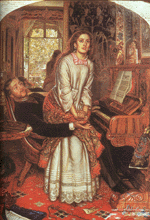
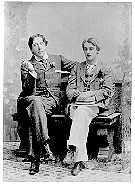
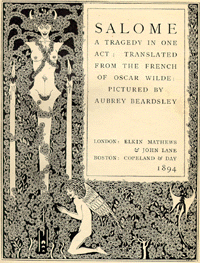

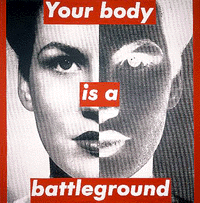
No comments:
Post a Comment